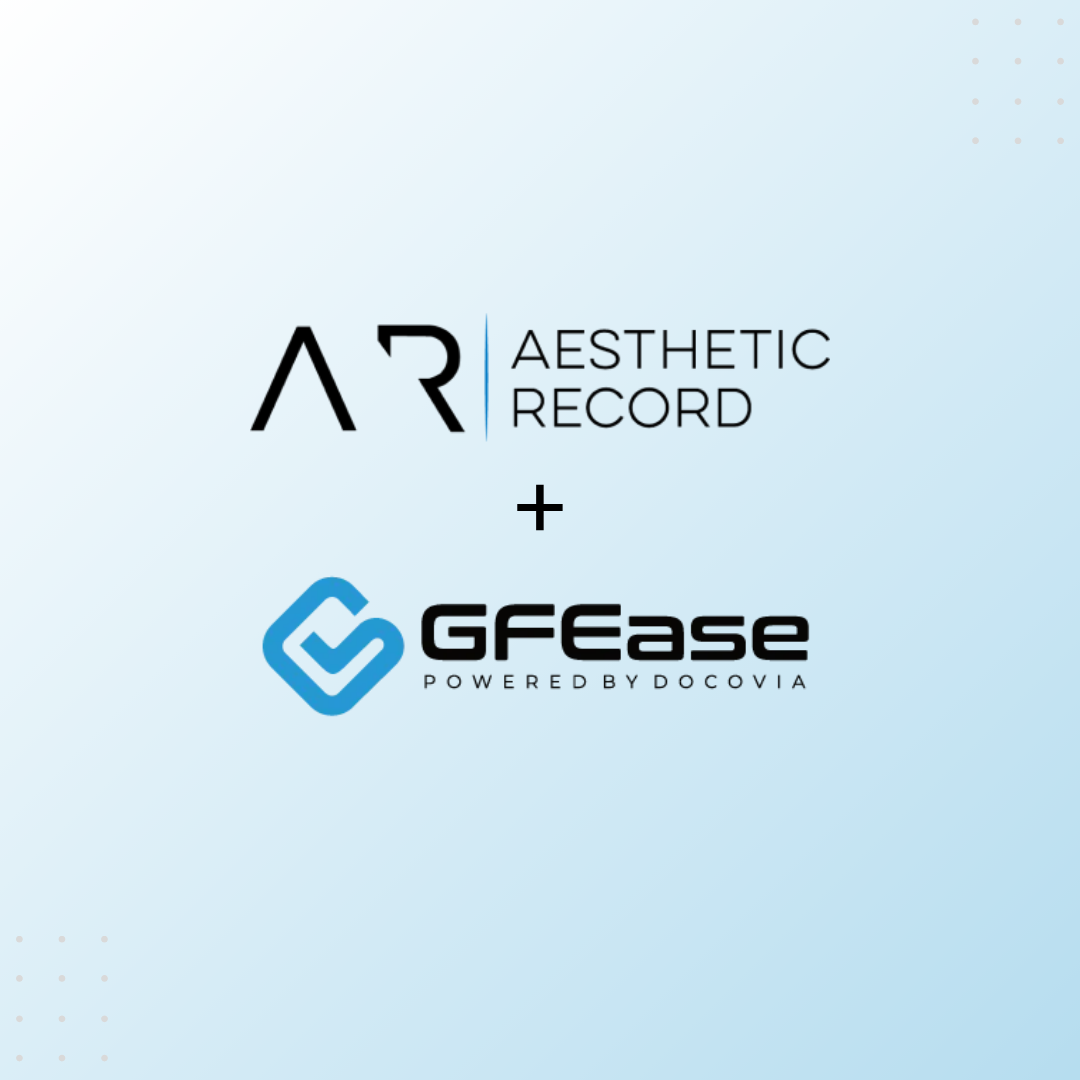How GFEase Simplifies Good Faith Exams for Busy Aesthetic Clinics
Are you tired of spending hours sifting through paperwork and stressing about Good Faith Exams at your aesthetic clinic? Well, say goodbye to the headache because GFEase is here to simplify the process for you!
GFEase is revolutionizing the way aesthetic clinics handle Good Faith Exams by offering fast, reliable, and compliant services. With GFEase, you can streamline the exam process and focus on what truly matters - providing top-notch care to your clients.
One of the biggest benefits of using GFEase is the improved workflow it brings to your clinic. No more wasting time on tedious paperwork or struggling to meet compliance standards. GFEase takes care of all the nitty-gritty details so you can focus on what you do best - making your clients look and feel their best.
Say goodbye to administrative stress with GFEase by your side. Our user-friendly platform makes it easy to schedule exams, track progress, and access important information with just a few clicks. You'll wonder how you ever managed without it!
But the benefits don't stop there. By using GFEase, you'll also be able to provide better care to your clients. With streamlined processes and easy access to important information, you can ensure that your clients receive the best possible care during their Good Faith Exams.
So why wait? Simplify your Good Faith Exams with GFEase and take your aesthetic clinic to the next level. Your clients - and your sanity - will thank you!

In recent years, peptides have become increasingly popular in wellness and aesthetic practices for their regenerative, anti-aging, and metabolic benefits. But before offering peptide therapies, patient safety and appropriate screening are essential. GFEase has expanded its clearance services to include wellness treatments such as weight-loss peptides and other peptide protocols. Here’s how GFEase handles peptide clearances: Patients provide detailed medical history, lifestyle, and current medications during intake Licensed providers evaluate potential interactions, contraindications, and appropriate dosing Clearance decisions may include oversight recommendations or follow-up labs Documentation is centralized and stored securely Because peptide therapies often involve systemic effects, clearance demands stricter protocols. GFEase’s model ensures consistent, expert review across patients and states without burdening your in-office team. Benefits of clearing peptides with GFEase: Risk mitigation: Identify contraindications or drug interactions Scalability: Serve more patients across wider geographies Efficiency: Combine peptide and aesthetic treatment clearance in one exam Compliance: Documented, standardized protocols As your practice grows its wellness offerings, GFEase empowers you to add peptide therapies confidently and compliantly—without creating administrative overload.

Adopting GFEase is more than flipping a switch—it’s about optimizing your workflow for virtual clearance. Start by mapping all the treatments your practice offers (aesthetics, wellness, injectables, etc.) and determine which require GFEs. Then customize your intake form within GFEase to reflect those offerings and relevant medical questions. GFEase’s platform allows branding, custom questions, and conditional logic to create a seamless experience. Train your staff to position the virtual GFE to patients as a value-add — a fast, no-hassle way to get cleared without extra office visits. When patients request treatment, your team sends them the GFE link or QR code—patients complete it on their device, then hop into the video visit with no downloads needed. The licensed provider reviews and returns clearance results, which are stored and shared via your dashboard. To maximize success: Monitor clearance turnaround times and patient drop-off Track which treatments are most frequently combined Evaluate states or treatments with higher veto rates Use reporting to refine your intake questions Integrating GFEase properly ensures alignment between virtual assessments and your in-office care pathway—creating a smoother, more scalable practice model.

Traditional GFEs often require dedicated space, scheduled staff, and operational overhead. GFEase shifts that burden into a streamlined virtual experience, offering compliance without complexity. Because it functions remotely, you reduce the need for in-house medical practitioners to remain on standby merely to approve treatments. GFEase also eliminates hidden fees: no setup cost, no monthly fees, and no location-based charges. Patients appreciate the convenience too — they can initiate a GFE from home, on any device, without downloads or technical barriers. The HIPAA-compliant telehealth system ensures privacy and security while fulfilling regulatory requirements. Providers connected via GFEase complete medical history reviews and clearance decisions in real time. By shifting GFEs into telehealth, your practice gains: Reduced overhead on staffing and infrastructure Faster throughput from inquiry to cleared patient Greater consistency in clearance standards Better patient satisfaction via convenience With GFEase, compliance becomes an enabler—not a bottleneck—for growth.

One of the most powerful features of GFEase is its ability to clear patients for multiple treatments during a single Good Faith Exam . Many practices require separate evaluations when combining injectables, lasers, or wellness therapies; GFEase simplifies that. During the virtual exam, providers review patient history, contraindications, and goals across proposed treatments, then issue combined clearances where appropriate. This eliminates redundant paperwork, repeated scheduling, and patient frustration. Because everything is centralized, your team can see which treatments were cleared at once and proceed confidently. GFEase supports treating combinations such as neurotoxins, fillers, laser services, microneedling, and wellness therapies. That means fewer “stopping points” for patients and smoother transitions into treatment planning. Key advantages: Efficiency: No need for multiple sequential exams Patient experience: Less waiting, fewer appointments Team clarity: All clearances go into one unified report Scale: Handle more patients in less time If your practice often offers multi-modality treatments, GFEase can greatly reduce friction in your clearance workflow and boost throughput.

As the healthcare industry evolves, so do the methods of patient evaluation. GFEase represents the future of Good Faith Exams, combining technology with medical expertise to provide efficient, compliant, and patient-friendly evaluations . The platform's innovative approach aligns with the growing demand for telehealth services in the medical aesthetics and wellness sectors. Future-Oriented Benefits: Telehealth Integration: Meets the increasing demand for remote healthcare services. Innovative Technology: Utilizes cutting-edge tools for seamless evaluations. Patient-Centered Care: Focuses on convenience and accessibility for patients. Industry Leadership: Positions your practice at the forefront of healthcare innovation. Embracing GFEase allows practices to adapt to industry trends, offering modern solutions to traditional processes.

Compliance with state regulations is crucial in medical aesthetics and wellness treatments. GFEase ensures that Good Faith Exams are conducted in accordance with legal requirements, safeguarding both patients and providers. The platform offers quick, state-specific assessments, secure documentation, and virtual access to licensed providers. Compliance Features: State-Specific Assessments: Tailored evaluations to meet local regulations. Secure Documentation: HIPAA-compliant records for each GFE. Virtual Access: Licensed providers available for remote consultations. Regular Updates: Platform updates to reflect changes in state laws and regulations. Utilizing GFEase helps practices stay compliant, reducing the risk of legal issues and enhancing patient trust.

Managing multiple locations and ensuring consistent compliance across them can be challenging. GFEase offers a centralized platform that standardizes the Good Faith Exam process, regardless of geography. This ensures every patient receives a compliant evaluation by a licensed provider, simplifying operations for multi-location practices. Operational Advantages: Centralized Management: Oversee all GFEs from a single platform. Standardized Processes: Maintain uniformity in evaluations across locations. Time Savings: Reduce administrative burdens with automated scheduling and documentation. Scalability: Easily expand services without the need for additional in-person staff. With GFEase, practices can focus on delivering quality care while maintaining operational efficiency.

We’re excited to announce a powerful new integration between GFEase, the trusted platform for Good Faith Exams, and Zenoti, the all-in-one business management solution for spas, salons, and medspas. This partnership connects compliance with operations—making it easier than ever to meet state regulations while delivering an exceptional patient experience. Why This Integration Matters In the aesthetic industry, compliance is not optional—it’s essential. But it shouldn’t slow down your workflow or create extra steps for your team. With the GFEase + Zenoti integration, Good Faith Exams are seamlessly woven into your scheduling, patient management, and reporting systems, saving time and ensuring you’re always aligned with regulations. Key Benefits of the GFEase + Zenoti Integration Compliance Built In Every treatment requiring a Good Faith Exam is automatically flagged in Zenoti, triggering GFEase’s secure, HIPAA-compliant process. Faster Patient Onboarding Patients can complete their Good Faith Exam and move to treatment without unnecessary delays—making their experience smooth from start to finish. Accurate Documentation All Good Faith Exam records are stored securely and linked to the patient’s Zenoti profile, ensuring you have a complete history for oversight and audits. Time Savings for Staff Your team can manage bookings, payments, and compliance steps in one platform—no need to switch between systems or track paperwork manually. Peace of Mind You can trust that every compliance requirement is met, without worrying about missed steps or outdated processes. How It Works When a patient books a service in Zenoti that requires a Good Faith Exam, the integration automatically connects to GFEase. The patient can complete their exam virtually or in-person, and the results are recorded directly in Zenoti—ready for your team and fully compliant. A Smarter Way to Manage Your Medspa Zenoti is already known for helping medspas grow with advanced scheduling, payment processing, marketing automation, and analytics. By adding GFEase to the mix, your practice gets a complete operations + compliance solution that works behind the scenes so you can focus on what matters most—delivering exceptional care. Ready to Integrate? If you’re a Zenoti user, connecting with GFEase is quick and easy. Our team will walk you through setup, training, and optimization so you can start streamlining compliance right away. 📩 Contact us today to learn how the GFEase + Zenoti integration can elevate your medspa’s efficiency, compliance, and patient experience.

The patient journey begins with trust and transparency. GFEase facilitates this by providing a seamless virtual consultation experience for Good Faith Exams. Through a secure, user-friendly platform, patients can engage in real-time evaluations with licensed providers, ensuring their medical history and treatment suitability are thoroughly assessed. Features of GFEase: Live Video Consultations: Conducted via a HIPAA-compliant platform without the need for downloads. Device Compatibility: Accessible on any device, simplifying the process for patients. Customizable Intake Forms: Tailored to match your practice's branding and specific treatment offerings. On-Demand Availability: GFEs available 7 days a week, accommodating diverse patient schedules. Adopting GFEase not only streamlines the GFE process but also builds patient confidence in the care they receive.

We’re excited to announce our official integration with Aesthetic Record, a leading EMR and CMR platform built specifically for aesthetic practices. This collaboration represents a major step forward in streamlining patient care, practice management, and compliance—allowing our users to experience a more powerful, connected, and efficient workflow. What Does This Integration Mean? By integrating with Aesthetic Record, we’re enabling a seamless connection between your clinical operations and business needs. Whether you're managing patient charts or handling pre- and post-treatment communication, this integration simplifies every touchpoint. Here’s how it enhances your practice: Unified Patient Records Aesthetic Record’s robust EMR allows for detailed, compliant clinical documentation—from treatment notes to before-and-after photos—all in one place. With our integration, data flows directly into the patient’s chart, eliminating redundancy and reducing manual entry errors. Client Management Reimagined Beyond just clinical documentation, Aesthetic Record functions as a full-featured CMR. Appointment tracking, digital consent forms, payment processing, and loyalty programs are all included—making client engagement easier than ever. Streamlined Workflow Our system now speaks directly to Aesthetic Record. This means faster data access, real-time updates, and fewer disruptions between platforms. It also empowers your team to focus more on patient care and less on administrative tasks. Enhanced Compliance & Oversight Aesthetic Record is built to keep your practice aligned with medical regulations. From Good Faith Exams to HIPAA-compliant communication, your clinical oversight is supported and documented at every stage. Analytics and Growth Tools With Aesthetic Record’s powerful analytics dashboard, you can now track performance, revenue, inventory, and treatment trends in one integrated system. Our connection ensures you can act on this data quickly and confidently. Why Aesthetic Record? Aesthetic Record is trusted by thousands of aesthetic practices for its intuitive interface and robust features. Whether you’re a solo injector or a multi-location clinic, its scalability and support make it a top-tier solution for the aesthetic industry. Ready to Connect? If you’re already using Aesthetic Record, integrating is fast and straightforward. Our support team is ready to walk you through the setup and ensure your workflows are optimized from day one. Let’s streamline, simplify, and scale—together.

